I’d like to continue the story of the cemetery at Montparnasse. I returned the next day with my intrepid Irish friend, who could not believe a puff a wind had closed down the cemetery the day before. Here’s a link to that sad tale.
This time, the gates were open. First, an impression. Unlike its more famous counterpart, Père Lachaise, it is stately, park-like, and not overwhelming. Père Lachaise first requires much navigating to arrive there. And then at double the size of Montparnasse, I feel as though I have arrived at the Charles de Gaulle Airport of Cemeteries. Many, many, and, seriously, many alleys lead to famous graves, including Jim Morrison’s, it’s true. But it is un periple to get there. This is a fancy French word for a trip, suggesting something like what Ulysses went through on the way home from Troy.
I thought I’d put forward some photos so you could get a feel of the place.
ASIDE
While certainly not an essay, this project reminds me of my freshman composition class at Cornell. The teacher, the poor man, an architecture professor had drawn the unlucky straw of a Tuesday / Thursday / Saturday class schedule. We students were equally unlucky, but he did not seem too interested in that fact. One day he assigned a photo essay, comparing the space between two pairs of buildings. What does that even mean? So I took photos of the spaces between the buildings, got the film developed and printed. Next, I taped the photos on typing paper, and that was it. “Normally,” he said, “a photo essay has words.” Unfazed, I was thinking he should have told me. Later I approached him for a reference to skip semester two of composition to take a poetry class. “No,” he said. “But if you had asked me for a reference for your photography, that would be another story.” Well, that unruffled my ruffled feathers.
Now in this case, I’d like to say a little something about the pictures.

The first is a partial overview of the cemetery, to get a feel for it. Created at the beginning of the 19th century in the southern part of the city, there is something stately about it. And from here on in this post, we have the smallest sampling of graves.
Although there isn’t a monument per-se to the soldiers who died for their country in WWI, here is a soldier’s tomb.
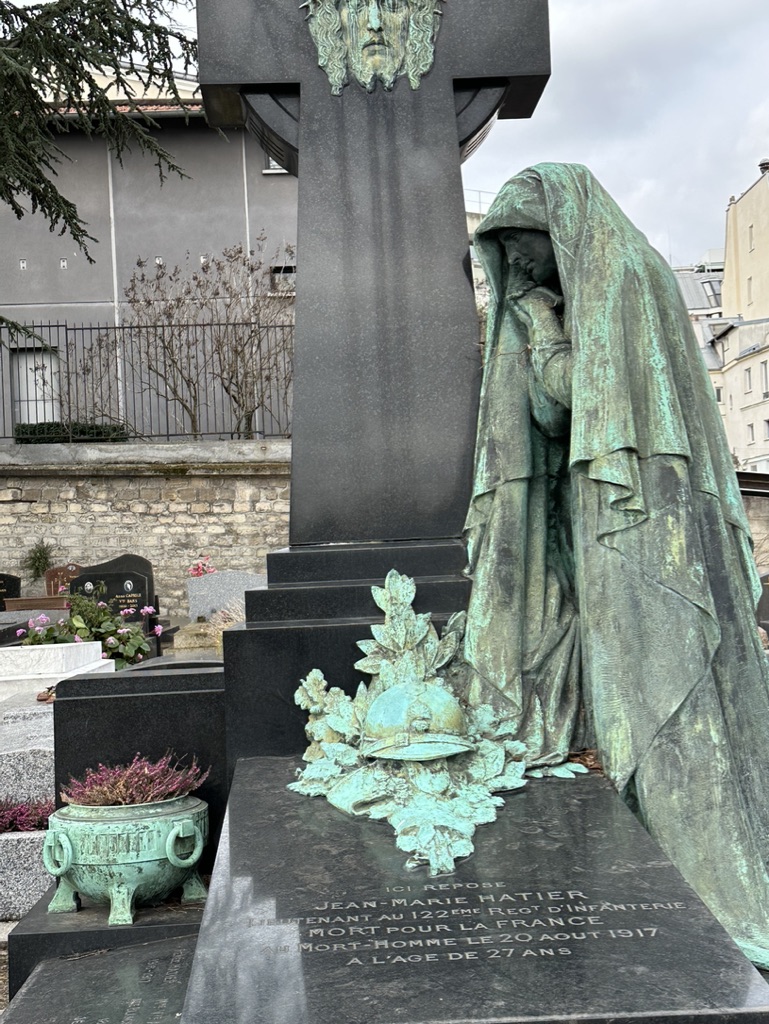
The cemetery is also home to French president Jacques Chirac and, surprisingly, to Mexican president Porfirio Diaz, whose term spanned 30 years until it ended in exile in Paris.
ARTISTES
A tremendous gathering of artists assemble here, their shades perhaps evolving new projects for art. Julio Cortazar, a star in the firmament of South American literature, was born in Brussels, lived in Buenos Aires, and died in France. Likewise, Mexican writer Carols Fuentes is interred here. Romanian playwright Eugène Ionesco, “an absurdist master,” was elected to the French academy. French luminaries, novelist Marguerite Duras joins poet Charles Baudelaire, along with composer Camille Saint-Saëns.

And especially tenderly, the twinned graves of Simone de Beauvoir and Jean-Paul Sartre can be seen here.
Our own Susan Sontag is interred here, our American philosopher who wanted to be buried in France. Here’s the opening of Henri Cole’s ruminations on her grave, including commentary on Sontag’s story, “The Way We Live Now.”
https://www.newyorker.com/books/page-turner/street-of-the-iron-poet-part-vii
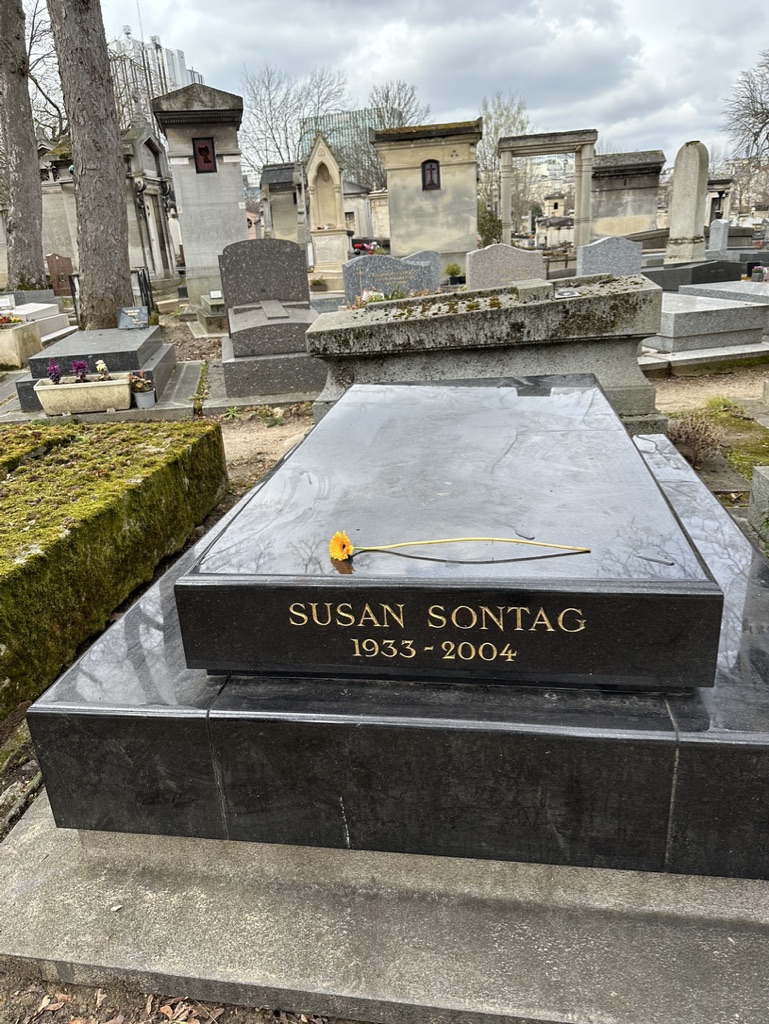
ALFRED DREYFUS
The cemetery houses the tomb of Alfred Dreyfus, the same Dreyfus of the Dreyfus affair, where in 1894 he was unfairly accused of treason and sentenced to life imprisonment. As a Social Studies teacher at an international school in Paris, I taught this scandal, which unfolds like a bad novel with treachery, betrayal and hatred of the Jews. Much hinged on a torn up letter in a wastebasket, whose handwriting was said to resemble that of Dreyfus. Here’s Professor Wiki: “The Dreyfus affair was a political scandal that divided the Third French Republic from 1894 until its resolution in 1906. L’Affaire Dreyfus has come to symbolise modern injustice in the Francophone world, and it remains one of the most notable examples of a complex miscarriage of justice and antisemitism.”
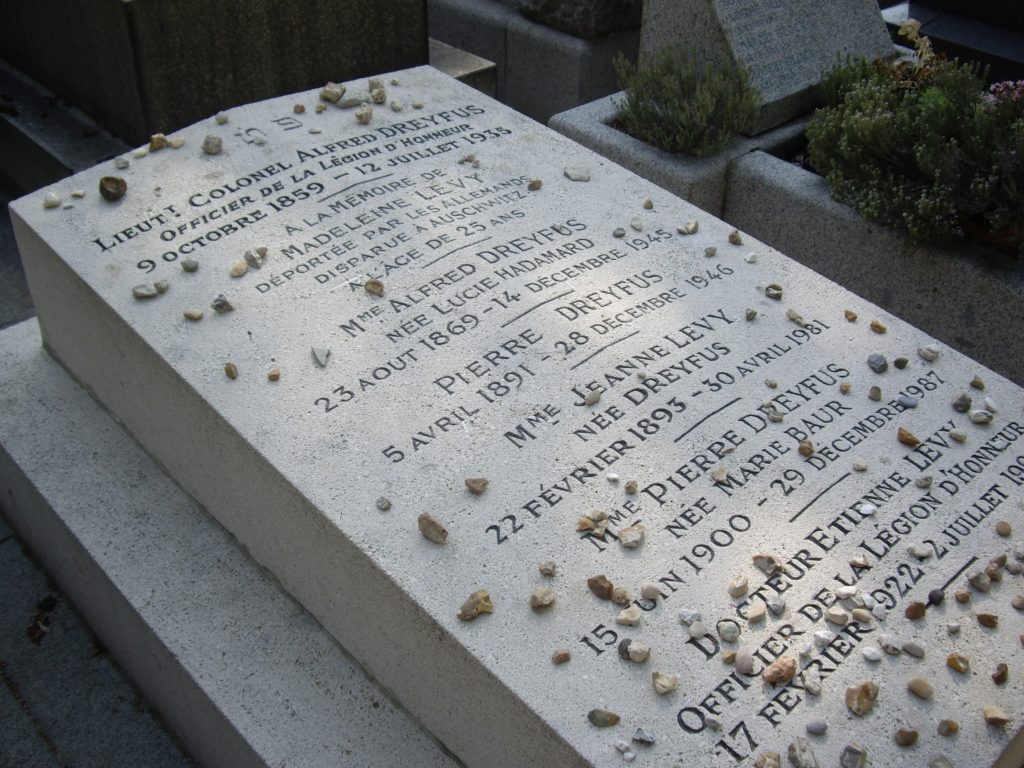
https://www.history.com/news/what-was-the-dreyfus-affair
HUMOR
I was quite surprised to learn that the French car, the citroën, a model of which I actually drove, was the brainchild of a certain André Citroën, who is interred here. I suppose it’s not that surprising, because, after al,l there was a Ford behind Ford automobile, but nonetheless, it was unexpected to see that he spends his afterlife here. And for sheer randomness, we have Charles Pigeon buried here in Montparnasse, the man who invented the Pigeon lamp, a safe oil lamp, replete with a logo, a pigeon with a lamp in its beak. And where there is a bird there is a cat.

And below I have the modern version of Hamlet’s gravedigger, this one sculpting all the info of the defunct, info as pithy as a haiku.

AND THE MAN WE HAVE ALL BEEN WAITING FOR
Samuel Beckett and his wife Suzanne Beckett are buried here.

The above is a slightly long view of the tomb. Unpretentious and modern.
In 1961 Beckett married Suzanne Déchevaux-Dumesnil, a woman slightly older than he, born in Argenteuil, a suburb of Paris.
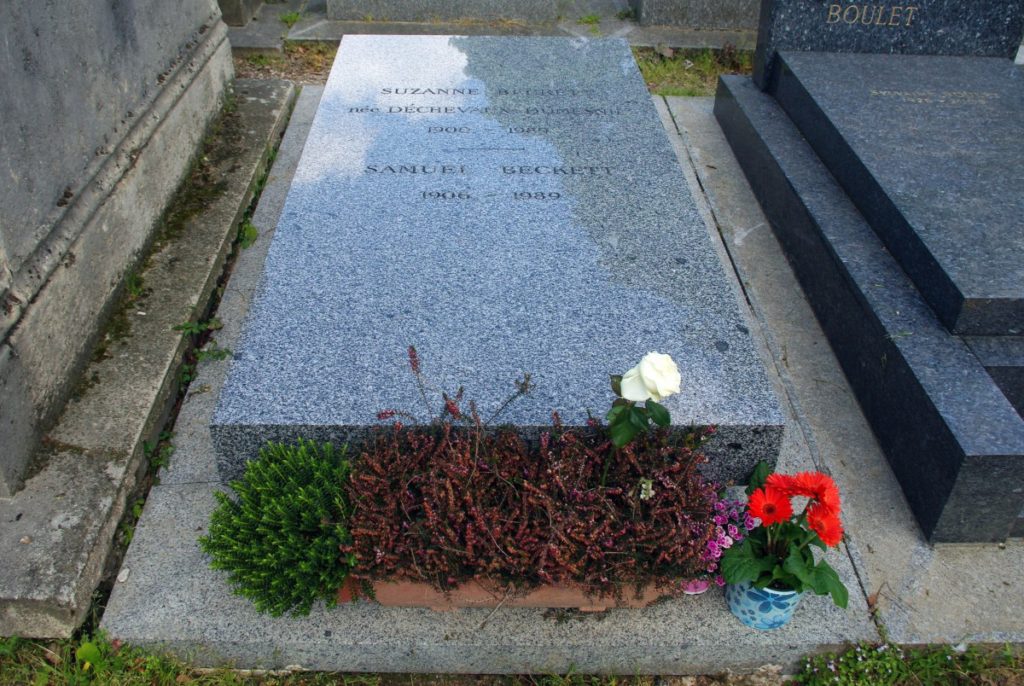
In the 30’s Beckett became enamored of her, a pianist, as was he, although they didn’t marry until 1961 in England.Suzanne died just months before Beckett in 1989.
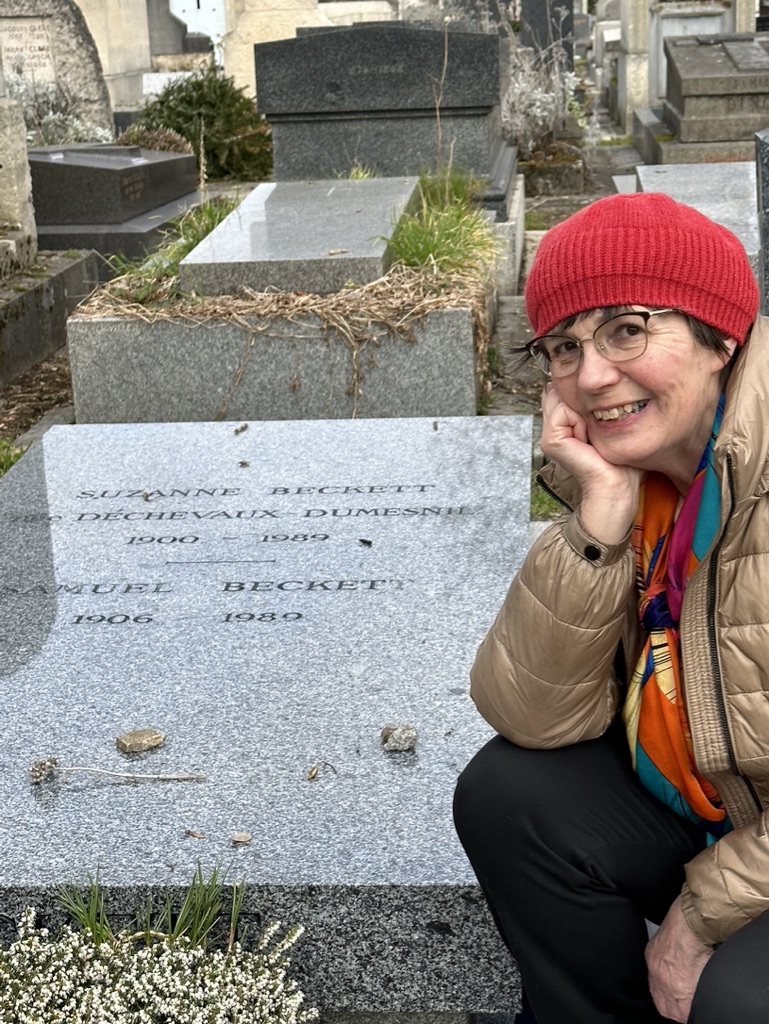
In the Wikipedia discussion of Suzanne Beckett, I found an interpretation of Waiting for Godot that I had never seen. “During the Second World War Beckett joined the French Resistance. For over two years, he and Déchevaux-Dumesnil hid from the Germans in a village in the South of France. Beckett’s Waiting for Godot has been called “a metaphor for the long walk into Roussillon, when Beckett and Suzanne slept in haystacks… during the day and walked by night…” It’s interesting, though, because Beckett didn’t want his play to be performed by women. “They don’t have prostates,” he protested, since evidently one of the vagabonds has to run off stage to pee periodically.
RIP
I offer two recordings here, one with the sound of Beckett’s voice as he expresses thanks for receiving a prize.
Here’s the sound of his voice:
The second clip, seems a fitting counterpoint to the first one. In this interview, Beckett says nothing at all. A fitting way to end this discussion of his place of burial is with this silent interview. Beckett agreed to be interviewed as long as no questions were asked.
Here’s the mute interview:
RIP Godot.
As always, I have learned and laughed thanks to your blog.
Just to note, now Simone de Beauvoir has moved to the Pantheon
https://medium.com/@angles.pierreyves/the-iconic-feminist-simone-de-beauvoir-finally-enters-the-french-canon-bd7c581d72da